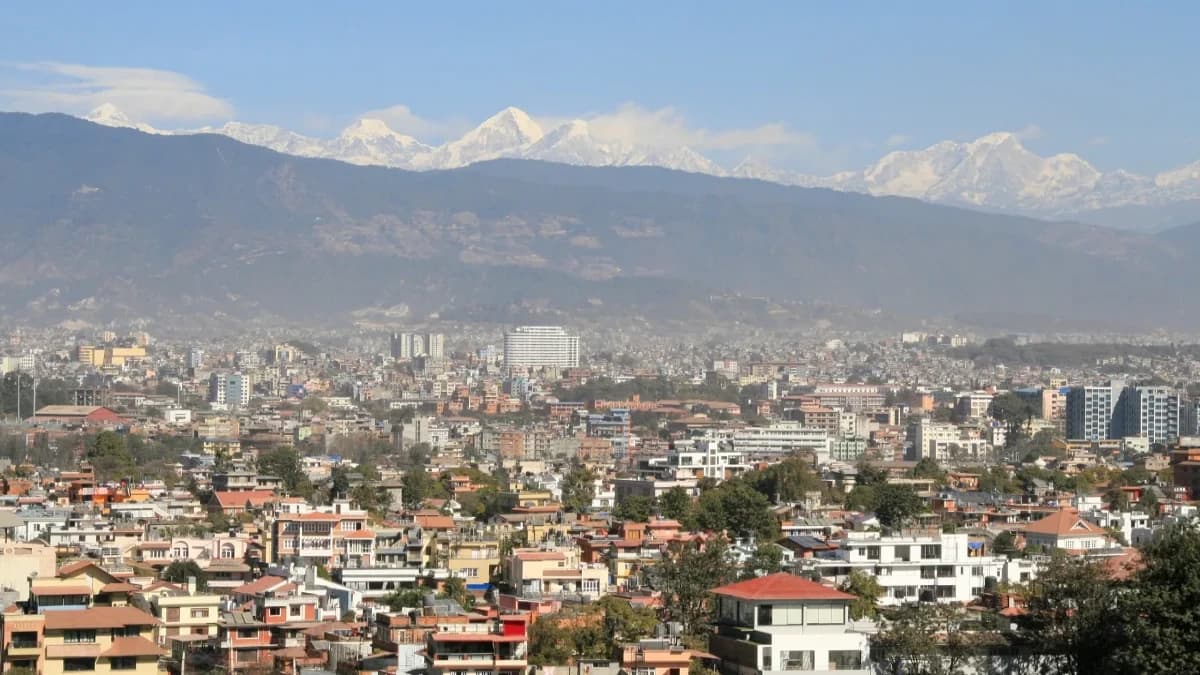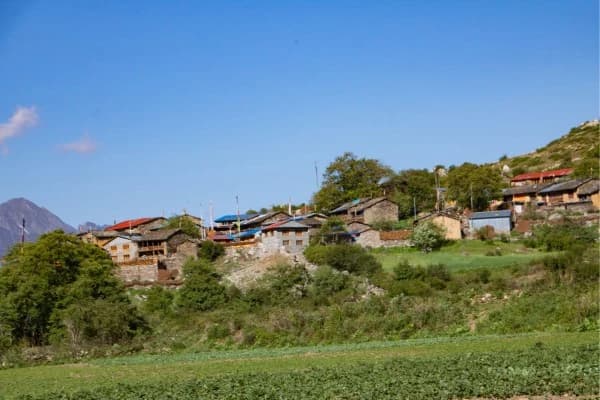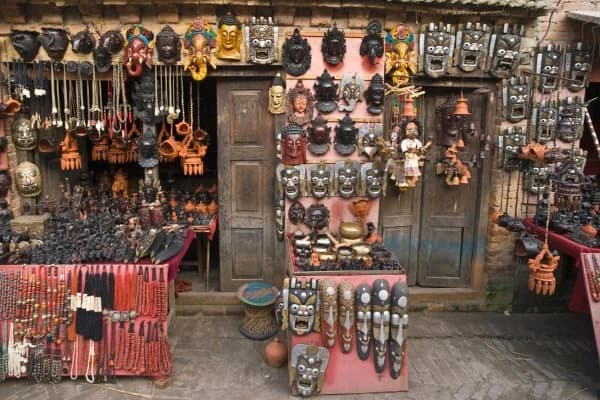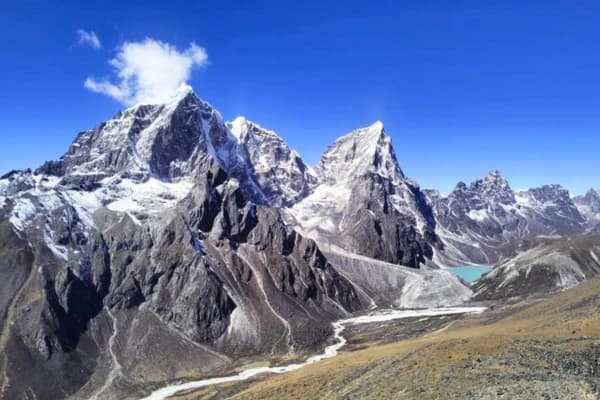Yes, you can see Mount Everest from Kathmandu, but only from certain hills and elevated viewpoints around the city. From downtown, it is almost impossible to spot because of the distance, the surrounding hills, and city pollution.
Mount Everest, the tallest mountain in the world at 8,848 meters, is about 160 kilometers northeast of Kathmandu. Even on a clear day, it does not easily appear from the valley floor. Your best chance to see the peak is to visit places like Nagarkot, Chandragiri, or Dhulikhel. You can also take a scenic mountain flight from Kathmandu to get a closer view.
This guide will show you exactly where to go, the best time to visit, and practical tips to improve your chances of seeing Everest. Whether you are planning a short day trip or a hill station tour, this will help you make your Everest sighting experience unforgettable.
Why is Everest Hard to Spot from Kathmandu City?
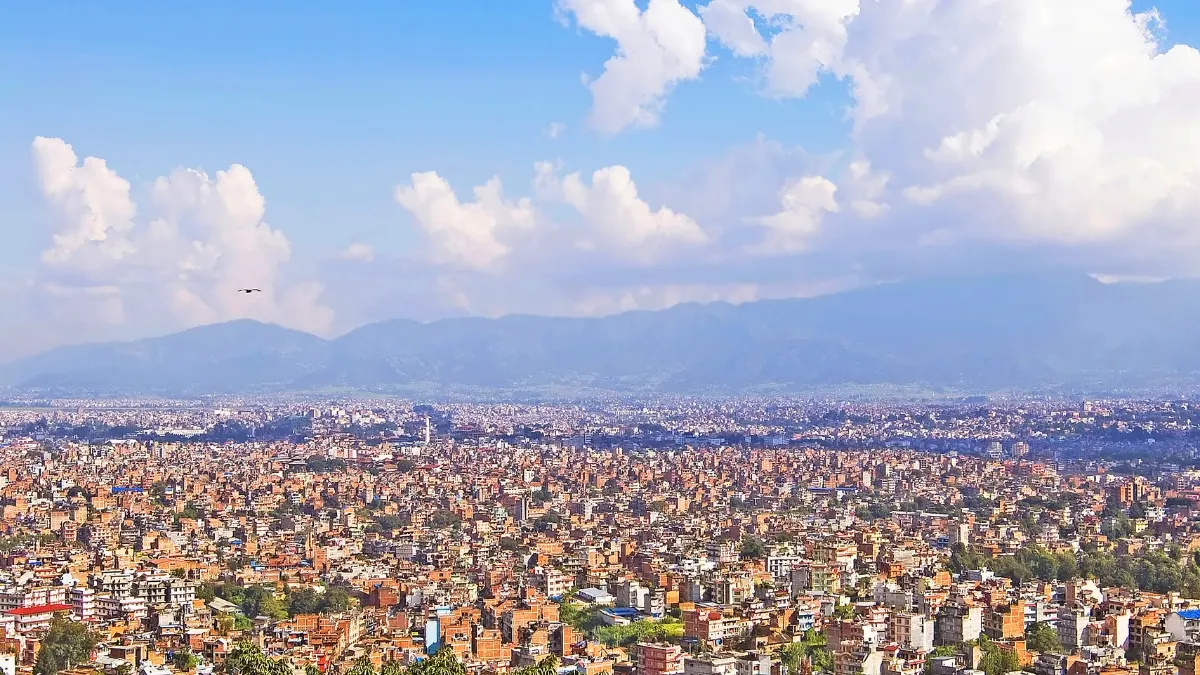
It’s a common misconception that you can easily see Mount Everest from Kathmandu. In reality, that’s very rarely the case. Despite Everest being “only” about 160 km away, several factors make downtown Kathmandu a tough place for spotting it.
Geography and Distance
Kathmandu sits in a valley at around 1,400 meters above sea level, surrounded by hills such as Shivapuri and Phulchoki. Everest, towering at 8,848 meters, lies far to the northeast. The valley ridges and nearby hills often block views, making city streets and lower hills poor vantage points.
Air Quality and Weather
The air in Kathmandu often contains haze, dust, and pollution, particularly during the monsoon season (June–September) and winter months. These factors reduce visibility and make Everest almost impossible to spot from the valley. The best chance to see Everest is early morning after a clear, cold night when the sky is crisp.
During rare events, like the COVID-19 lockdown, lower pollution levels allowed photographers to capture Everest from the valley, but this is highly unusual.
Limited Viewpoints
Only a few hilltops around Kathmandu offer realistic chances to see Everest:
- Nagarkot – famous for panoramic Himalayan views.
- Chandragiri Hill – provides a clear line of sight to distant peaks.
- Dhulikhel – quieter spot with less obstruction from nearby hills.
- Daman – further out, offering wide Himalayan panoramas.
- Downtown streets, rooftops, and lower hills almost never provide a reliable view.
Mistaken Peaks
Travelers often confuse other peaks for Everest. Common mix-ups include:
- Lhotse – Everest’s neighbor, sometimes mistaken due to proximity.
- Makalu – a pyramid-shaped peak visible from afar.
- Langtang region mountains – distant snow-capped peaks that can look similar.
- Ganesh Himal – often seen from the western parts of the valley, easily confused with Everest by untrained eyes.
Tip: Only from the right viewpoints or with guidance from experienced local guides can you confidently identify Everest. Hike through Chisopani Nagarkot and you may be able to see mount everest peaks.
In short:
Seeing Everest from downtown Kathmandu is extremely rare.
- To maximize your chances:
- Visit hilltop viewpoints like Nagarkot or Chandragiri.
- Go early in the morning when air is clear.
- Check weather and air quality before planning your trip.
Viewpoints Around Kathmandu Where You Can See Everest
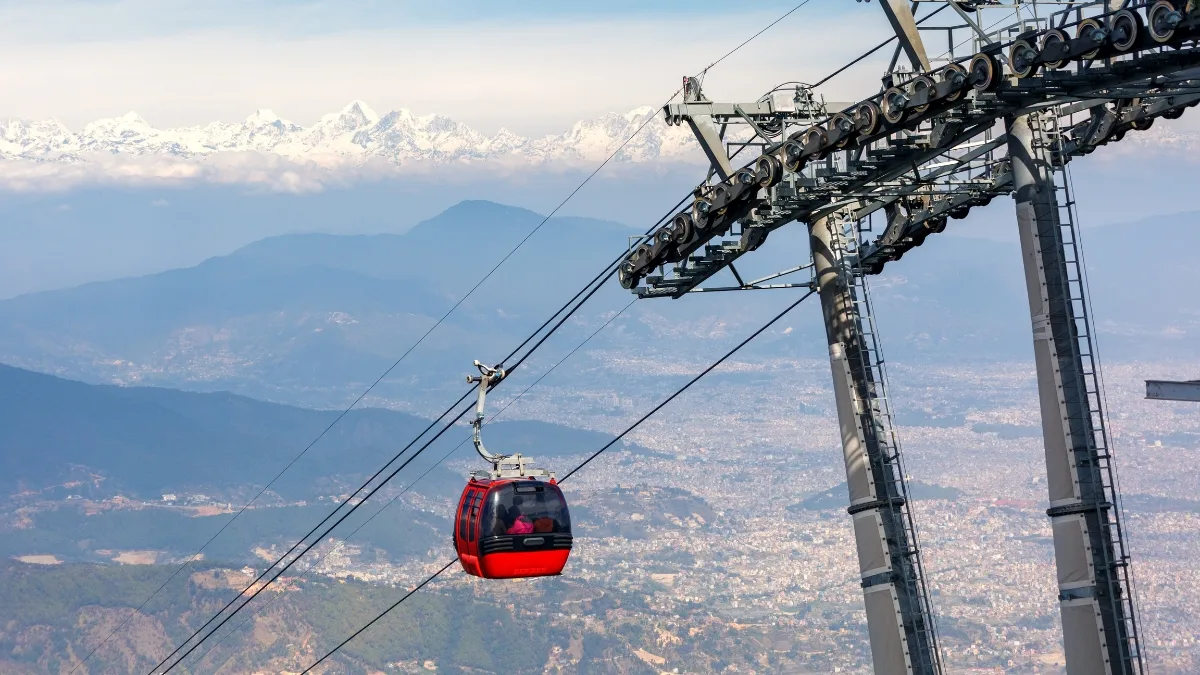
If you really want to catch a glimpse of Everest from the Kathmandu area, you’ll need to make your way to higher viewpoints. From downtown Kathmandu, the city streets and nearby hills usually block the view, but the surrounding hill stations and elevated spots offer some of the best chances to see the world’s tallest mountain. Here are the top places to visit:
Chandragiri Hills
- Elevation: 2,500 meters
- Offers panoramic views of the Himalayas, including Mount Everest on exceptionally clear days.
- Accessible by cable car, making it perfect for travelers who prefer an easy and scenic route.
- Sunrise is the best time for clear views and photography.
Book a Chandragiri Champadevi Hike with Nepal Gateway Trekking for a safe and guided experience with guaranteed viewpoints.
Nagarkot
- Elevation: 2,195 meters
- Famous for sunrise views of the Himalayas and wide-angle vistas of Everest.
- On clear days, you can also spot Langtang and Ganesh Himal, making it a favorite among photographers and nature lovers.
- The viewpoint is accessible and offers accommodation options for those wanting an overnight stay.
Dhulikhel & Kakani
- Quieter hilltops with less crowd, perfect for travelers looking for peace and nature.
- Excellent for both sunrise and sunset views of the Himalayan ranges.
- Staying overnight in these spots increases your chances of catching Everest on a clear day.
Other Hidden Local Viewpoints
- Experienced local guides know smaller, off-the-beaten-path locations that often provide the best views.
- Combining local guidance with a guided tour ensures you don’t miss Everest even on tricky visibility days.
- These spots are ideal for travelers seeking a more authentic and personalized experience.
Best Time to Spot Everest from Kathmandu
Seeing Mount Everest from Kathmandu isn’t guaranteed, but you can improve your chances with good timing. The best seasons are autumn, from September to November, and spring, from March to May. In autumn, the sky is usually clear, the air is fresh, and there is very little haze, so the mountains look sharp. Spring is also a good time because the weather is pleasant and the valley is full of colorful flowers, making the view even nicer.
The early morning, just after sunrise, is the ideal time to catch Everest. The air is clearest at this hour, with less haze and pollution, allowing the mountains to appear sharp and stunning.
Tips to improve your chances of seeing Everest
- Visit Nagarkot, Chandragiri, Dhulikhel, or Kakani for elevated viewpoints.
- Consider staying overnight at a hilltop to enjoy the early morning clarity.
- Check the weather and air quality before planning your trip.
By choosing the right season, heading out early, and picking the best hilltop spots, you can enjoy one of the most unforgettable views of Everest from the Kathmandu area. You can consult with the team of Nepal Gateway Trekking for the Everest View.
Tools & Tips to Improve Your Everest View Chances From Kathmandu
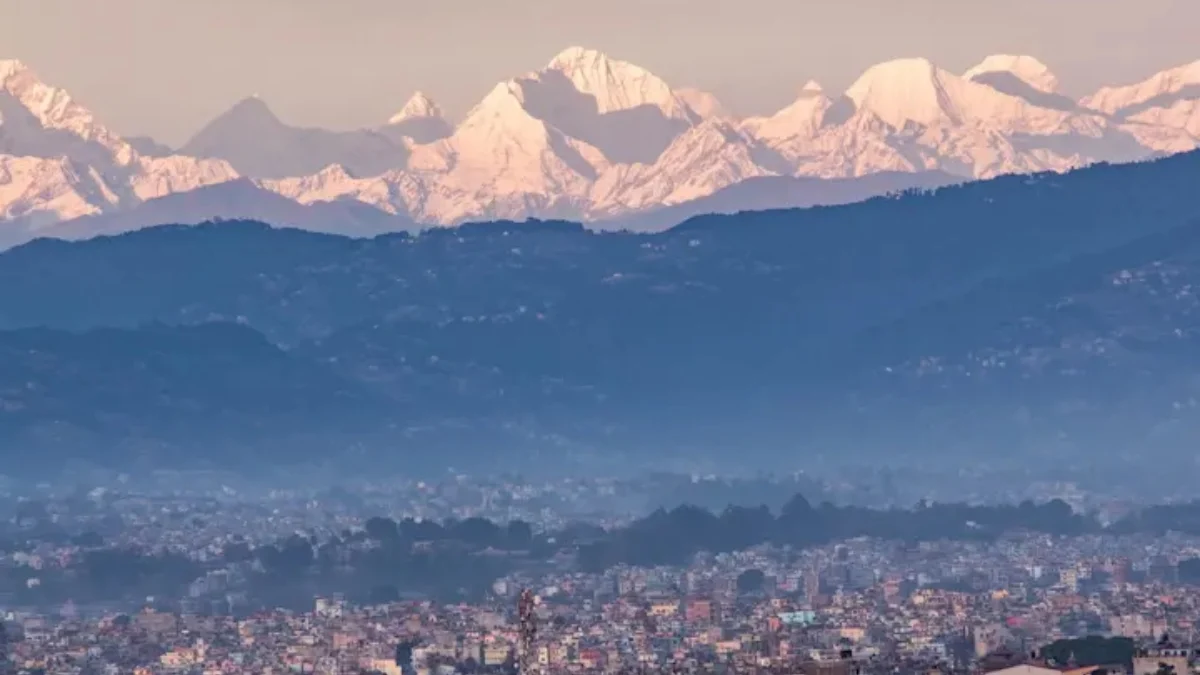
Even from the best viewpoints around Kathmandu, spotting Everest requires a bit of preparation. With the help of the right tools and a few simple tips, it can make a big difference in your Everest-viewing experience.
- Binoculars or a Telephoto Lens – Perfect for spotting distant peaks and capturing clear, detailed photos.
- Peak Identification Apps – Apps like PeakFinder can help you confirm which mountains you’re looking at, so you’ll know for sure when you’re seeing Everest.
- Local Guides – Experienced guides know the exact spots for the best views and can help you avoid confusion with other peaks.
- Overnight Stay – Spending a night at a hill station increases your chances of catching clear skies in the early morning.
For a seamless experience, consider booking a Nepal Gateway Trekking's Everest helicopter tour for the best Everest Scenario.
Common Myths & Misconceptions about Everest View from Kathmandu
There are several misconceptions about spotting Mount Everest from Kathmandu. Understanding the truth can save you from disappointment and help you plan a better experience.
- Everest is visible from downtown Kathmandu: This is false. Haze, pollution, and the surrounding hills make it nearly impossible to see the peak from the city.
- Haze-free mornings guarantee a sighting: Not always. Weather conditions in the Himalayas can change quickly, and even on clear mornings, Everest may remain hidden behind distant ridges or clouds.
- Other peaks mistaken for Everest: Many travelers confuse nearby mountains such as Lhotse, Makalu, Langtang, or Ganesh Himal with Everest.
Final Thoughts
You can see Mount Everest from Kathmandu, but only from the right hills and viewpoints. The best time is autumn or spring, when skies are clear and the air is fresh. You should head to elevated spots like Nagarkot, Chandragiri, Dhulikhel, or Daman, and consider bringing binoculars, a peak identification app, or a local guide to make spotting the mountain easier.
Even if Everest remains hidden behind clouds, the stunning Himalayan landscapes, colorful sunrises, and peaceful hilltops make the experience unforgettable.
Contact Nepal Gateway Trekking to book treks, guided tours, or scenic mountain flights and let our experienced guides take you to the viewpoints where Everest reveals its majesty.
Frequently Asked Questions About Seeing Everest from Kathmandu
Can I see Everest from downtown Kathmandu?
No, it’s very unlikely. The city’s haze, pollution, and surrounding hills generally block the view.
What is the closest hill for mountain views near Kathmandu?
The most accessible and reliable options are Chandragiri and Nagarkot. These hilltops offer clear lines of sight to Everest and other Himalayan peaks on good weather days.
When is the best season to view Everest from Kathmandu hills?
The best seasons are autumn (September–November) and spring (March–May), when the skies are clear, the air is crisp, and haze is minimal.
Do mountain flights guarantee an Everest view?
Yes, scenic flights from Kathmandu are the most reliable way to see Everest, even if visibility from the hills is blocked.
Will haze always block the view?
Not always. Early mornings after a clear night give the best chance for crisp visibility, but weather in the Himalayas can change quickly.
